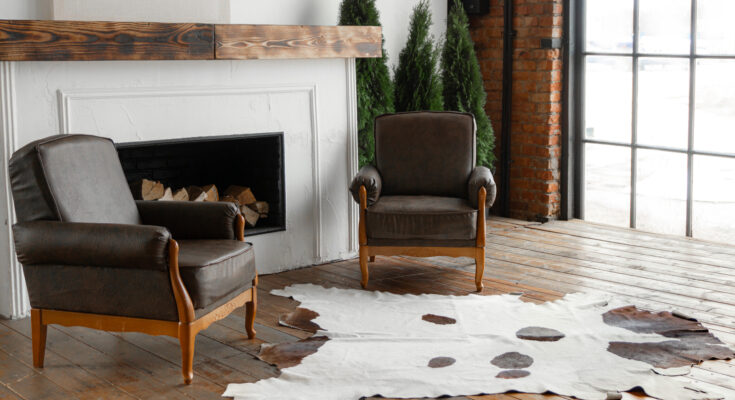How To Properly Layer IKEA Cow Hide Rugs
We may receive a commission on purchases made from links.
Cow hide rugs can range from playful to glamorous, but are never boring. Cow hides can add a rustic down-home touch and a bit of unexpected texture to any space, however, they are irregularly shaped, and often too small to be the sole floor covering for a room. Many are also fairly thin and can easily move around or bunch up, causing a tripping hazard. For these reasons, cowhides are typically found layered with other rugs. This can be an overwhelming prospect for a first-time cow hide owner, and a difficult look to pull off. The key to any rug layering is contrasting colors, shapes, and textures. Though rug combinations and placement options are endless, it takes careful consideration to get the look right.
The first step is choosing your cow hide. Cow hide rugs can be expensive, but IKEA’s KOLDBY cowhide rug is on the cheaper side at $160. This rug covers around 36 square feet and comes in brown or black with white spots throughout. It has an online rating of 4.8, and according to reviews, it never slides, it is easy to clean, and it isn’t treated with chemicals, making it a good option for people with skin conditions and allergies. Please note, IKEA’s cowhide rugs are actual cow hide. However, IKEA only uses hides sourced from the food industry, making sure all parts of the cow are used instead of discarded.
Rugs that pair well with cow hides
A classic layered rug combo is cow hide over a rectangular rug in a rough texture, such as jute or sisal. IKEA’s TÅGBILJETT flatwoven jute rug is a great option. The largest size covers more square footage than the cow hide, providing a perfect frame. The rough texture of the jute holds the cow hide firmly in place, while the cow hide provides some needed softness. Jute rugs are also light and neutral in color, and a good contrast to a dark or patterned cow hide. Although you are looking for contrast, the colors should be from the same family and work with the room as a whole.
You can also place a cow hide over a traditional Persian rug to add some playfulness. In this instance, choose a cow hide in a solid color so it won’t fight with the patterns in the base rug. The list of suitable rug options to layer with your cow hide does not end at jute, sisal, or Persian, however. Any rug that provides a good frame for your cow hide, offers enough contrast to let your hide stand out, and fits with the overall vibe of your room will work beautifully.
Cow hide rug placement for a great look
Proper cow hide placement comes down to the rug size. If your base rug is only slightly larger than the hide, try placing the hide at a slight angle instead of dead center for some visual interest. While the base rug should always be lined up perfectly with the furniture, the smaller rug can be placed in any orientation. Try using the hide to anchor furniture, such as under a coffee table, dining room table, or seating area. If you have the space, you can also layer more than one hide over a rug. Whatever the size, the cow hide does not have to stay perfectly on the base rug but can hang off of the edge, extending the available rug space.
All rugs, whether layered or not, are a potential tripping hazard. Be careful when layering your area rugs so that the overall rug thickness doesn’t get out of control. Fortunately, cow hides are thin, and shouldn’t cause too much concern. However, being light and thin, they do have the potential to bunch up. If your hide isn’t placed under furniture, consider using The Good Stuff Rug Tape, which is made to stick area rugs to both carpet and hardwood floors. With a little creativity, you’ll have a cow hide layered look you’re sure to love.



